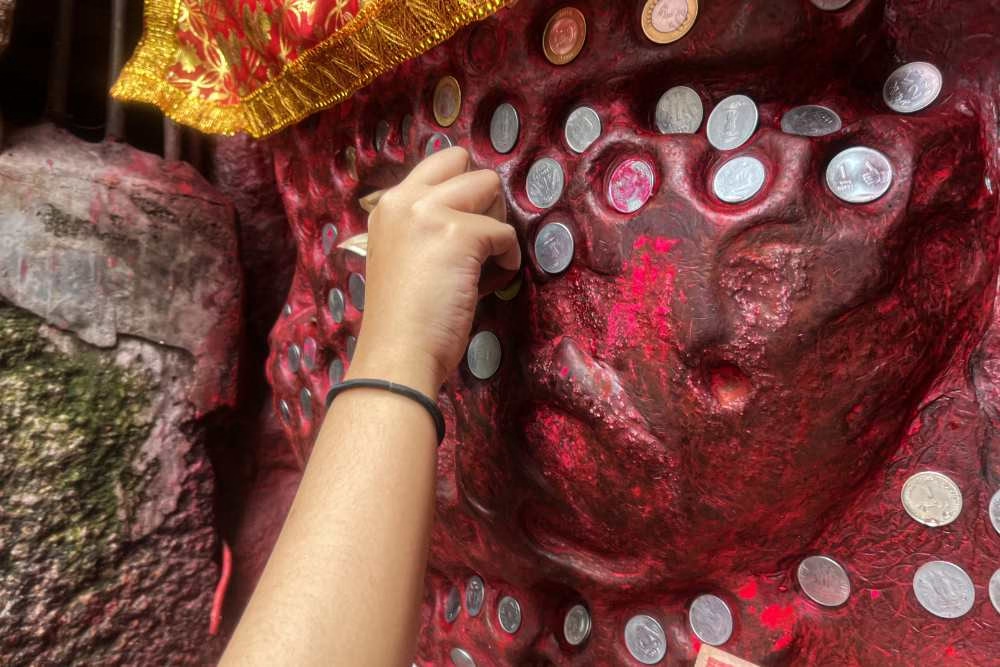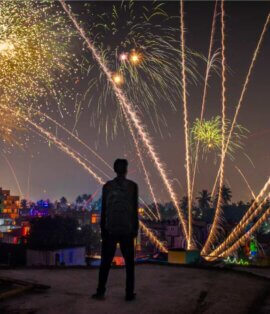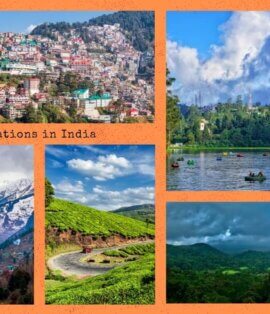The Kamakhya Temple, located on Nilachal Hill in Guwahati, Assam, is one of the most important Shakti Peethas in India. It is a holy place dedicated to the Mother Goddess and is known as a center of feminine energy and spiritual power. Every year, thousands of devotees and visitors come here for the Kamakhya Devi Yatra to offer prayers, learn about ancient tantric traditions, and experience the rich culture of Assam.
Suppose you’re planning a spiritual getaway or want to understand the cultural significance of one of India’s most mystical temples. In that case, this guide offers everything you need to know—from history and rituals to travel tips and festivals.
Also Read about below Shakti Peethas
A Temple Rooted in Legend and Divine Power
According to Hindu mythology, Kamakhya Temple marks the sacred spot where Goddess Sati’s womb (yoni) fell after her self-immolation. This makes it one of the 51 Shakti Peethas, where the Goddess is worshipped in her most powerful, creative form. Unlike many temples with traditional idols, Kamakhya is unique—the main sanctum features a yoni-shaped stone constantly bathed in natural underground spring water, symbolizing fertility, creation, and divine femininity.
The temple’s origins date back to the 8th–9th century, with renovations during the Koch dynasty in the 16th century. Later, the Ahom rulers of Assam helped maintain the temple, leading to the famous Nilachal style of architecture, with a rounded dome on a cross-shaped base and detailed carvings of gods and mythological scenes.
Tantric Traditions: The Spiritual Essence of Kamakhya
Kamakhya is often referred to as the seat of Tantra worship in India. The temple is a hub for practitioners of Tantric rituals and sadhanas, blending Vedic traditions with ancient tribal customs. Devotees believe the goddess embodies the union of Shakti (divine feminine energy) and Shiva (cosmic consciousness).
For centuries, this spiritual heritage has made Kamakhya a magnet for saints, sages, and spiritual seekers. Rituals here are deeply symbolic, focusing on the cyclical nature of life, the sanctity of womanhood, and the power of creation.
Ambubachi Mela: Celebrating the Goddess’s Divine Feminine
The Ambubachi Mela, held annually in June, is the most important festival of Kamakhya Temple and a defining part of the Yatra. The festival marks the menstruation period of Goddess Kamakhya, during which the temple remains closed for three days. Devotees gather in massive numbers on the fourth day to witness the reopening of the temple doors, a highly auspicious moment.
Highlights of the Ambubachi Mela include:
- Spiritual significance: The festival celebrates menstruation as a natural and divine process, honoring feminine power and fertility.
- Pilgrim influx: In 2025, over 200,000 devotees visited the temple daily despite restrictions on overnight stays near the premises.
- Cultural vibrancy: The mela transforms Guwahati into a spiritual carnival, with fairs, cultural programs, and an influx of sadhus and tantric practitioners across India.
For many pilgrims, experiencing Ambubachi is a life-changing event that offers a profound connection to the goddess.
Darshan timings and rituals are observed.
The Kamakhya Temple commences its operations early morning, following centuries-old rituals. Here’s a typical schedule for visitors:
- 5:30 a.m.: Ritual Snana (holy bath of the deity)
- 6:00 a.m.: Nitya Puja (daily prayers)
- 8:00 a.m.–1:00 p.m.: Morning Darshan
- 2:30 p.m.–5:30 p.m.: Afternoon darshan
- 7:30 p.m.: Evening Aarti (ceremonial prayer)
Entry to the temple is free, but VIP darshan tickets are available for ₹501. Defense personnel receive special rates, making the temple accessible to all devotees.
Best Time to Visit Kamakhya Devi Temple
While the temple is open year-round, your experience may vary depending on the season:
- June (Ambubachi Mela): Ideal for witnessing the temple’s most important festival, but expect large crowds.
- October–March: Pleasant weather makes this period perfect for a peaceful spiritual retreat.
- Monsoon Season: The lush green surroundings of Nilachal Hill come alive, but heavy rains can make travel tricky.
How to Reach Kamakhya Temple
Kamakhya Temple is well-connected to major transport hubs in Guwahati, making it accessible for pilgrims and tourists alike.
| Transport Option | Details |
|---|---|
| By Air | The Lokpriya Gopinath Bordoloi International Airport is about 20 km away. |
| By Train | Kamakhya Railway Station (8.6 km) and Guwahati Railway Station (8 km) offer excellent connectivity. |
| By Road | Buses and taxis from ISBT Guwahati (16.5 km) or other towns in Assam make travel easy. |
| Local Transport | Auto-rickshaws, shared taxis, and ropeway services are available to reach Nilachal Hill. |
Accommodation Options
Guwahati offers a range of accommodation options:
- Budget Stays: Dharamshalas and guesthouses near the temple cater to pilgrims.
- Mid-Range Hotels: Comfortable stays are available within a 5–10 km radius.
- Luxury Resorts: For a more indulgent experience, upscale hotels near the Brahmaputra River offer scenic views.
Booking in advance is highly recommended, especially during the Ambubachi Mela, as the influx of pilgrims can make last-minute reservations difficult.
Other Attractions Near Kamakhya
Your Kamakhya Yatra can be a blend of spirituality and sightseeing. Some must-visit places nearby include
- Pobitora Wildlife Sanctuary: Famous for one-horned rhinos.
- Saraighat Bridge: A historic bridge over the Brahmaputra River.
- Accoland: A popular amusement park for families.
- Regional Science Centre & Planetarium: Perfect for science enthusiasts.
- Sri Surya Pahar: Archaeological site featuring ancient rock carvings.
These attractions allow visitors to experience Assam’s rich biodiversity, culture, history, and spiritual journey.
Unique Cultural Experience
What sets Kamakhya apart is its seamless fusion of spirituality and culture. Pilgrims often encounter sadhus, tantric practitioners, and tribal devotees from remote parts of Northeast India, giving the temple a diverse spiritual character. Markets around the temple brim with local crafts, Assamese silk, and unique offerings for the goddess, adding a cultural charm to the Yatra.
Travel Tips for Devotees
- Dress Modestly: Visitors are encouraged to wear traditional or modest attire as a sacred space.
- Arrive Early: Plan your visit early in the morning to avoid long queues.
- Respect Rituals: Some areas of the temple, especially the inner sanctum, may have restricted access; follow the instructions of priests.
- Stay Hydrated: Guwahati’s weather can be humid; carry water and essentials.
- Plan for Crowds: Temple queues can stretch for hours during festivals, so patience is key.
Don’t miss the essential spiritual journey of the Kamakhya Devi Yatra.
Kamakhya Temple is not just a place of worship—it’s an experience that challenges perceptions, celebrates divine femininity, and offers spiritual solace. Its unique connection to Tantra, its celebration of menstruation as divine, and its centuries-old rituals make it a standout pilgrimage destination in India.
For spiritual seekers, Kamakhya represents an inward journey—a reminder of the cyclical rhythms of nature, the power of creation, and the deep connection between humanity and divinity. For travelers, it’s a chance to witness Assam’s vibrant culture, scenic beauty, and deep-rooted traditions.
Whether visiting during the mystical Ambubachi Mela or on a quiet winter morning, the Kamakhya Devi Yatra will leave you enriched, inspired, and spiritually fulfilled.






